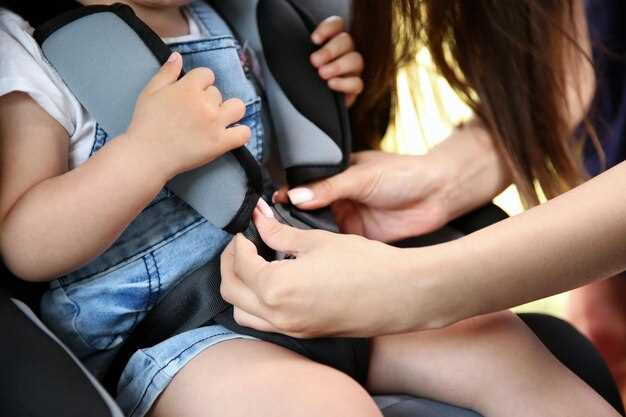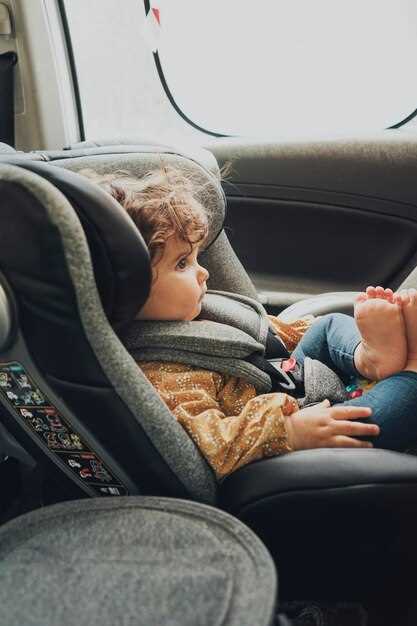
Child car seat safety guidelines

Ensuring the safety of children in vehicles is a paramount concern for every parent. With the increasing number of regulations surrounding child car seats, it is essential to stay informed about the best practices for securing your child while traveling. This not only encompasses the correct type of seat but also involves understanding the age, weight, and height requirements that dictate which car seat is appropriate for your child.
Car seat safety regulations vary by region, but all aim to protect children from potential harm in the event of an accident. Familiarizing yourself with these regulations is critical to ensure that you are compliant and providing the best protection possible. From birth to the teenage years, various types of seats–infant seats, convertible seats, and booster seats–play significant roles in keeping children safe during transit.
As a parent, it is your responsibility to choose the right car seat and to follow the manufacturer’s instructions for installation and use. A well-fitted seat can significantly reduce the risk of injury. Understanding how to properly secure the seat and ensuring that your child is correctly harnessed is crucial for their safety. Following these guidelines will help create a secure traveling environment for your little ones, allowing you to focus on the journey ahead.
Selecting the Right Car Seat for Your Child’s Age and Size
Selecting the appropriate car seat for your child is crucial for ensuring their safety while traveling in a vehicle. Regulations regarding car seat safety often vary by state and country, but there are general guidelines based on your child’s age, weight, and height that can help you make the right choice.
Infants, typically from birth to at least 12 months, should be secured in a rear-facing car seat. These seats provide better support for the head, neck, and spine, which are particularly vulnerable in young children. Ensure that the weight and height limits of the seat align with your child’s size, as premature transitions can compromise safety.
Once your child exceeds the limits of the rear-facing seat, generally around ages 2 to 4, they should transition to a forward-facing car seat with a harness. This seat should accommodate your child’s weight, typically up to 65 pounds, and must be used until they reach the maximum limits as specified by the manufacturer.
After outgrowing the forward-facing seat, usually around age 4 to 7, your child can use a booster seat. This helps position the seat belt correctly across their body. It’s important to use a booster seat until your child is tall enough for the seat belt to fit properly, which is generally around 4 feet 9 inches tall, and typically between ages 8 to 12.
Finally, when your child no longer needs a booster seat, they should still ride in the back seat until they are at least 13 years old. Always consult the specific regulations in your area, as well as the car seat manual, to ensure compliance with safety guidelines. Regularly check that the car seat is properly installed and securely fastened to provide the best protection for your child on the road.
Understanding State Regulations and Compliance for Car Seats

Each state in the United States has established specific regulations regarding the use of car seats to ensure the safety of children while traveling in vehicles. Parents must familiarize themselves with their local laws to ensure compliance and enhance safety.
Most state regulations dictate the type of car seat that is appropriate based on a child’s age, weight, and height. For instance, many states require infants to be in rear-facing car seats until they reach a certain weight limit, typically around 20 to 40 pounds. As children grow, they must transition to forward-facing seats, followed by booster seats until they can safely use the vehicle’s seat belt.
It is essential for parents to regularly check for updates to these regulations, as laws can change. Non-compliance not only puts children at risk but may also lead to legal penalties, including fines. Authorities often provide resources that outline these requirements; however, parents should also consult the National Highway Traffic Safety Administration (NHTSA) for national standards and guidelines.
Additionally, some states have specific installation guidelines for car seats, emphasizing correct positioning and secure attachment in the vehicle. Parents should ensure that car seats are registered with the manufacturer to receive important safety updates and recall notifications.
In conclusion, understanding and adhering to state car seat regulations is crucial for every parent. Ensuring compliance not only safeguards children during car travel but also contributes to overall road safety.
Proper Installation Techniques to Ensure Safety

Ensuring the safety of your child while traveling in a car begins with the correct installation of the car seat. Follow these essential techniques to achieve a secure fit.
First, read the manufacturer’s instructions for both the car seat and your vehicle. Each model may have specific requirements for installation, including the use of seat belts or LATCH anchors.
When installing a rear-facing car seat, place it in the back seat of the vehicle, as this is the safest location for children. Ensure that the car seat reclines at the proper angle, typically between 30 to 45 degrees, to support your child’s head and neck adequately.
For forward-facing car seats, ensure that they are installed using either the vehicle’s seat belt or the LATCH system. If using a seat belt, thread it through the appropriate path in the car seat, making sure it is tight and does not move more than an inch side-to-side or front-to-back when pulled at the base.
Utilize the LATCH system if available in your vehicle. Attach the lower anchors to the car seat and ensure the connectors are secured tightly. Check the tension to confirm that the car seat is stable and properly secured.
After installation, test the seat by applying pressure on the base with your knee while tightening the belt or LATCH strap. This technique helps eliminate slack and ensures a snug fit.
Finally, regularly check the installation of the car seat to ensure it remains secure, especially after adjustments or relocations. Following these proper installation techniques is vital to providing the highest level of safety for your child during travel.